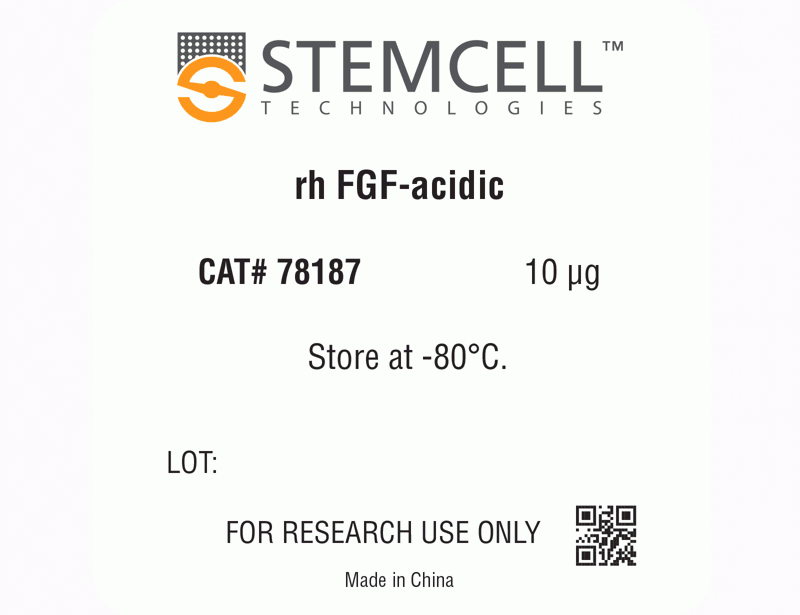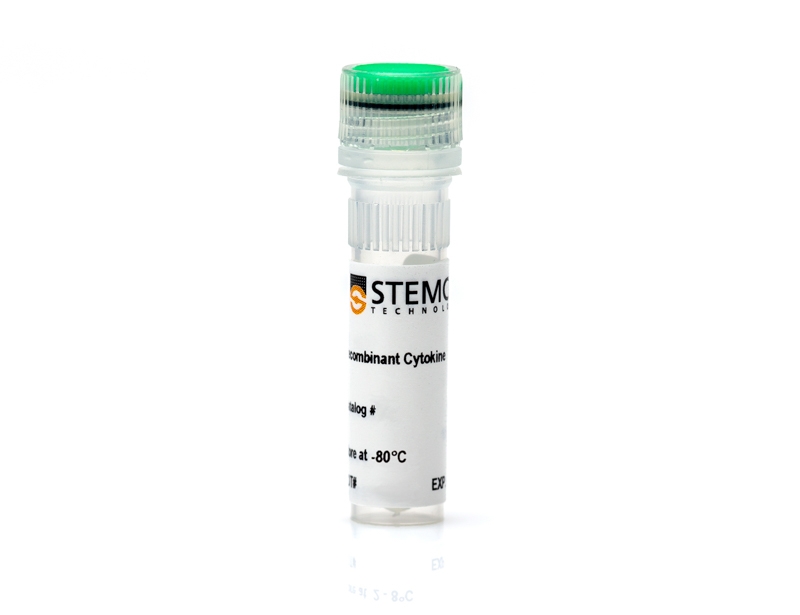Human Recombinant FGF-acidic
Fibroblast growth factor-acidic
概要
Fibroblast growth factor acidic (FGF-acidic), also known as FGF-1, is a potent activator of DNA synthesis, cell proliferation, and chemotaxis and is known to play numerous roles in development, regeneration, and angiogenesis (Jaye et al.; Galzie et al.; Presta et al.). FGF-acidic is produced by multiple cell types and is capable of activating all cells of mesodermal origin and many cells of neuroectodermal, ectodermal, and endodermal origin. It is found in large quantities in the brain, but is also expressed in hepatocytes, vascular smooth muscle cells, neurons of the CNS, skeletal muscle cells, fibroblasts, keratinocytes, endothelial cells, intestinal columnar epithelial cells, and pituitary basophils and acidophils. FGF-acidic is secreted as a disulfide-linked homodimer and is stored in complex with heparan sulfate, a requirement for its interaction with FGF receptors (Guerrini et al.; Mohammadi et al.). Internalized FGF-acidic signals through protein kinase C and promotes cell survival by inhibiting p53 and proapoptotic signaling (Bouleau et al.).
Subtype
Cytokines, Growth Factors
Alternative Names
Acidic fibroblast growth factor, aFGF, ECGF, Endothelial cell growth factor, FGF-1, FGF-alpha, Fibroblast growth factor 1, GLIO703, HBGF-1, Heparin-binding growth factor 1
Cell Type
Endoderm, PSC-Derived, Endothelial Cells, Epithelial Cells, Fibroblasts, Granulocytes and Subsets, Keratinocytes, Mesoderm, PSC-Derived, Neurons, Smooth Muscle
Species
Human
Area of Interest
Immunology, Neuroscience, Stem Cell Biology
Molecular Weight
15.8 kDa
Purity
≥ 95%
技术资料
| Document Type | 产品名称 | Catalog # | Lot # | 语言 |
|---|---|---|---|---|
| Product Information Sheet | Human Recombinant FGF-acidic | 78187, 78187.1 | All | English |
| Safety Data Sheet | Human Recombinant FGF-acidic | 78187, 78187.1 | All | English |
数据及文献
Data

(A) The biological activity of Human Recombinant FGF-acidic was tested by its ability to promote the proliferation of BALB/c 3T3 cells in the presence of 10 μg/mL heparin. Cell proliferation was measured using a fluorometric assay method. The EC50 is defined as the effective concentration of the growth factor at which cell proliferation is at 50% of maximum. The EC50 in the example above is less than 0.3 ng/mL. (B) 2 μg of Human Recombinant FGF-acidic was resolved with SDS-PAGE under reducing (+) and non-reducing (-) conditions and visualized by Coomassie Blue staining. Human Recombinant FGF-acidic has a predicted molecular mass of 15.8 kDa.



